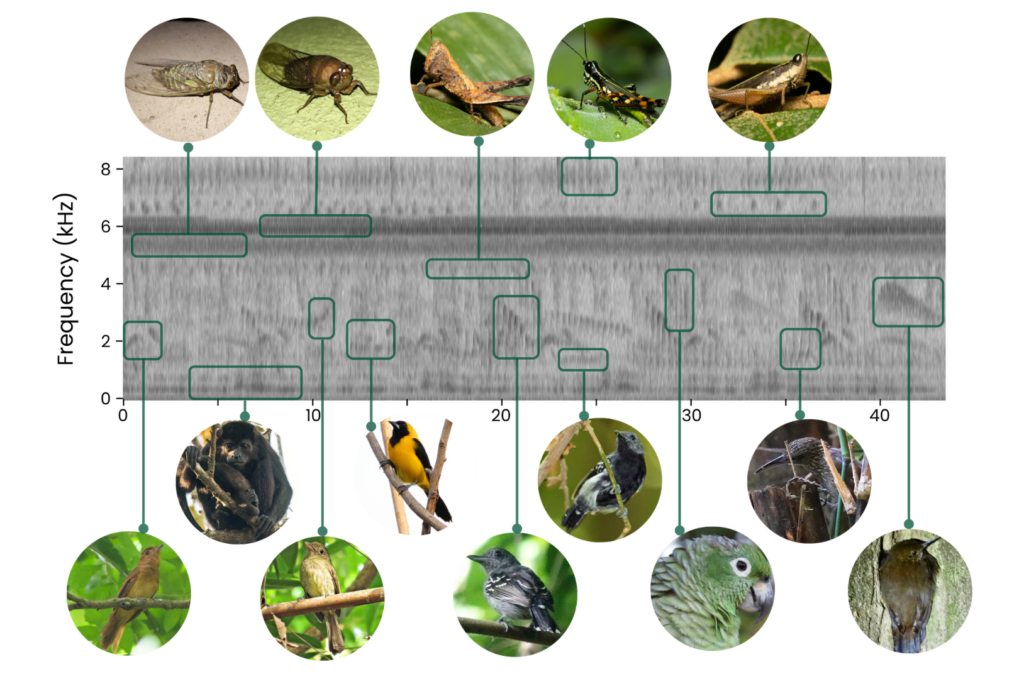Harnessing the Power of Sound and AI to Track Global Biodiversity Framework (GBF) Targets

Biodiverse ecosystems are critical to the overall health of our planet, providing numerous essential ecosystem services that underpin human well-being and the global economy. The landmark Global Biodiversity Framework lays out a series of powerful targets to combat the current biodiversity loss crisis. However, to track progress towards and ultimately achieve these targets at a global and continuous scale, we need to leverage the power of advanced technologies. Biodiversity monitoring is vital for tracking species trends over time and space, informing conservation efforts, and assessing how human activities affect ecosystems. However, incomplete biodiversity knowledge highlights the need for affordable, scalable technologies, such as ecoacoustics and artificial intelligence (AI), to fully realize the GBF targets. Incorporating AI into passive acoustic monitoring (PAM) has the potential to revolutionize our understanding of ecosystems, species interactions, and the impacts of environmental changes. By utilizing PAM and AI, researchers can gather data on the presence, distribution, and behavior of a wide range of species, from birds and mammals to insects and frogs. This information can then be used to inform conservation and management decisions, including identifying key biodiversity areas, establishing protected areas, evaluating wildlife management initiatives, and developing conservation strategies tailored to different species.
In this white paper, we describe the power of PAM and AI (or ecoacoustics) to monitor biodiversity, inform conservation action, and track progress towards GBF targets. We begin with a general overview of acoustic monitoring, including its benefits for threat detection and biodiversity monitoring, as well as the technology and infrastructure used. We then outline several case studies from our collaborative work around the world, to showcase the wide range of ecoacoustic applications. We align each of these real-world examples with specific GBF targets and their candidate indicators. Finally, we present key takeaways and areas for future advances in the use of ecoacoustics and AI for biodiversity monitoring. By leveraging this technology, we can make meaningful progress towards the protection and preservation of our natural world.
Read the full white paper here.

